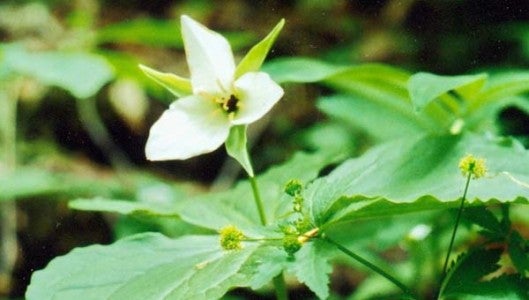Mid-March begins the wildflower explosion
Published 10:00 pm Tuesday, March 24, 2015

Sweet White Trillium, shown here at Pearson’s Falls, is a favorite local wildflower. (Photo by Dean Campbell)
Throughout the Dark Corner, and surrounding hills of North and South Carolina, March begins an explosive harbinger of spring—wildflowers in all shapes and sizes.
They reach their zenith in April as the panorama of subtle pastel leaves break out of drab, grey tree limbs and trunks, with maple and sweet gum trees starting brilliant red, quickly turning to a reddish orange, then yellow, before finding pale green.
Dozens of other native tree varieties display up to 50 varying shades of light to medium green as distinguishing leaves and buds appear. To the discerning eye, there are as many shadings of green now as there will be color varieties this fall.
Underneath the majestic trees, the forest floor (and many roadsides throughout the area) becomes a color palette of wildflower blossoms.
Bloodroot starts the parade of more than 1,200 mountain wildflowers that inhabit the piedmont and varying mountainous levels of the Blue Ridge Escarpment. To avoid the danger of heavy frosts so early in the year, it folds up its beautiful flower and sensitive leaf into a tight roll each night.
As a warming spring sun rises over the Escarpments’s eastern slopes, hundreds of other deep-rooted and ground-cover varieties—five of which are on the federally endangered list—show their distinctive shapes and colors.
Trout Lilies, Toadshades, Oconee Bells, Hepaticas, a large variety of Trilliums, Polygalas, Flame Azaleas and Anemone, lead the array of low to medium height varieties.
By mid-April, the very tiniest of the wildflowers appear. A few require a magnifying glass to enjoy the intricacies of their design. We are blessed to have a single location in this vicinity where some 200 wildlife varieties can be enjoyed for a very nominal fee.
It’s called Pearson Falls, just off the old US 176 route from Tryon to Saluda, near Melrose Mountain.





